
- WEB 1 vs WEB 2 vs WEB 3?
- Web 1.0, Where we come from; Web 2.0, Where we are; Web 3.0, Where we're headed
- Web 1 vs Web 2 vs Web 3: Why does it matter?
- Web 1.0:
- Web 2.0:
- Web 3.0:
- So, what does all this mean for you?
- Where does Web 2.0 End and Web 3.0 begin?
- Final Thoughts
- Frequently Asked Questions.
- UP NEXT
- REFERENCES
HI EVERYONE, AND WELCOME BACK! SO WHAT’S
- WEB 1 vs WEB 2 vs WEB 3?
- Web 1.0, Where we come from; Web 2.0, Where we are; Web 3.0, Where we're headed
- Web 1 vs Web 2 vs Web 3: Why does it matter?
- Web 1.0:
- Web 2.0:
- Web 3.0:
- So, what does all this mean for you?
- Where does Web 2.0 End and Web 3.0 begin?
- Final Thoughts
- Frequently Asked Questions.
- UP NEXT
- REFERENCES
WEB 1 vs WEB 2 vs WEB 3?
Web 1.0 is where the Web started; It was the “read-only Web,” static, all about reading, and getting information. Web 2.0 is where the web is now; the “participative social Web,” reading, writing, and creating; Social media, Corporations profiting from your personal data, and expansion of centralized control. Web 3.0 is where the web is going; the “read, write, execute Web, the metaverse, the blockchain. Empowering the individual to profit from their own data, decentralizing control to the people.

Web 1.0, Where we come from; Web 2.0, Where we are; Web 3.0, Where we're headed
You wake up, groggy and confused. You try to sit up, but your arms are tangled in something. You look down and see that you’re wrapped in a cocoon of webbing.
You try to stand up and realize that your feet are stuck to the ground. You look around and see that you’re in some kind of prehistoric forest. In the distance, you can hear the sound of dinosaurs roaring. You’re definitely not in Kansas anymore.
As you start to calm down and take stock of your situation, you realize that you have no idea how you got here. The last thing you remember is browsing Reddit before going to bed. You must have been sleep-browsing and somehow ended up in the web 1.0 era.
You start to explore your surroundings and quickly realize that everything is different. There are no buildings or roads, only trees, and plants as far as the eye can see. You also notice that there are no other people around. In fact, the only creatures you see are dinosaurs.
You eventually come across a lake and see your reflection. But, to your shock, you don’t see your own face staring back at you. You see the face of a web 1.0 web page. You have become a web page!
As you start to freak out, you hear a voice behind you. “Don’t worry, you’re not the first person to be stuck here.” You turn around and see a man wearing a toga and sandals.
“Who are you?” you ask.
“I am the Oracle of Delphi,” he replies. “I have been waiting for you.”
“Waiting for me? What do you mean?” you ask.
“You are the chosen one,” he says. “You must help us defeat the dinosaurs and save web 1.0.”
“But how am I supposed to do that?” you ask.
“I will give you a magical web page,” he says. “With this web page, you will be able to defeat the dinosaurs.”
“How do I use it?” you ask.
“When the time is right you will know,” he says. “Now go, and may web 1.0 be with you.”
With that, the Oracle vanishes in a puff of smoke. You are now alone in this strange place with no idea what to do next. But, you know one thing for sure. You have to save web 1.0!
Web 1 vs Web 2 vs Web 3: Why does it matter?
The internet has come a long way since its inception in the late 1960s. In its early days, the internet was primarily used by academics and the military for research and communication purposes.
But, it underwent a major transformation as became more accessible to the general public in the 1990s.
This transformation gave birth to what we then called the World Wide Web, simply known as the web today.
Have you noticed the terms “meta”, “metaverse’ and “web 3” being thrown around? It seems they’re being used more and more every single day.
Well, the web has come a long way since its early days as well. It has evolved from a static collection of pages to a dynamic and interactive platform that we use today.
This evolution can be divided into three distinct phases, which are often referred to as web 1.0, web 2.0, and web 3.0.

Web 1.0:

The first phase of the web, often referred to as web 1.0, was defined by static and largely informative websites. This was the early days of the internet when most people were just getting online for the first time. Web 1.0 sites were typically built using HTML and CSS, with very little dynamic content or interaction.

back to our story…….
You frantically try to think of what web 1.0 even is. All you remember hearing stories that it existed in an ancient time before the internet as we know it today; before technologies like the wheel or soap existed.
You remember stories about people using strange ancient tools called “desk-top computers” and home telephones to communicate with each other.
You notice that some homes don’t even have one of these tools in the house.
How did they do it? How did they even function?
You soon realize that you may never know the answer to that question, as a T-Rex comes lumbering towards you, ready to feast.
If you’re like me- ancient- you remember what web 1.0 was like. It was a simpler time, back when we used Geocities to host our websites and AOL Instant Messenger to communicate with our friends.
You probably don’t remember these things, because you likely didn’t exist. But if you could go back in time and use web 1.0, you’d be in for a real treat!
First of all, there’s no Facebook, Twitter, or Instagram. You actually have to talk to people face-to-face, use hotmail to email people or use these ancient contraptions known as “home telephones” if you wanted to communicate with them!
And there’s no Google either – so if you want to look something up or you want to go to a website, you have to actually type the address into the address bar yourself (good luck with that).
In web 1.0, we eventually had Yahoo! as our search engine of choice, because Google didn’t exist yet.
Oh and the fun we all had connecting to the internet through our phone lines.
Speaking of Yahoo!, the homepage was completely different in web 1.0. Instead of a newsfeed or a list of your recent emails, it’s just a big directory of websites. And don’t even think about using Chrome or Firefox – web browsers in web 1.0 were nothing like that!
The most popular web browser, the only web browser in most cases, in web 1.0 was Internet Explorer. It was famous for its security vulnerabilities and for being very slow and clunky.
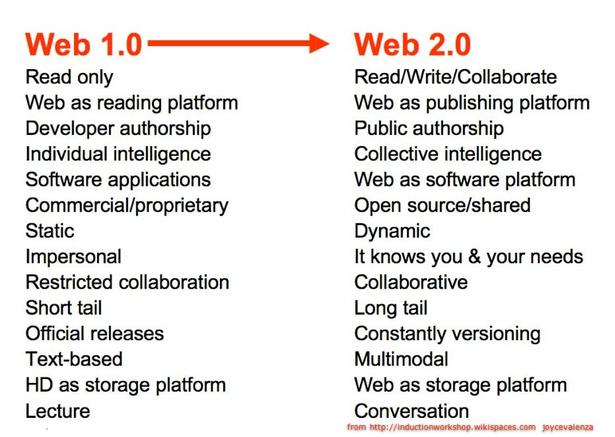
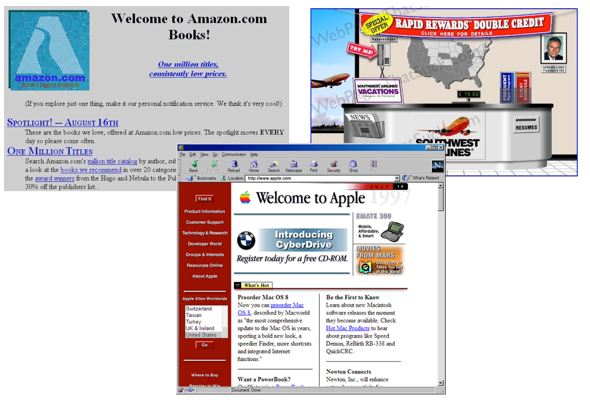
Web 2.0:
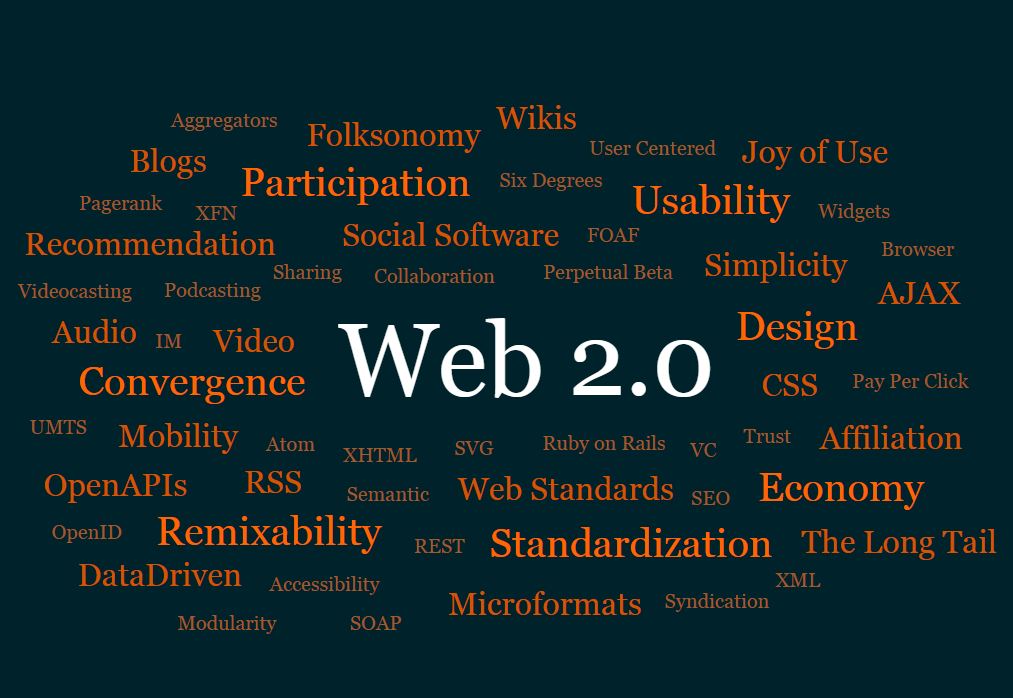
The second phase of the web, web 2.0, is defined by dynamic and interactive websites. This was the era of social media; when sites like MySpace and Facebook began to take off. Web 2.0 sites are built using more advanced technologies such as AJAX, which allows for more dynamic content and interaction.

You’ve evaded the T-Rex for now and made it to work. You’re sitting in your cubicle, happy that you haven’t been eaten and that you don’t need to worry about wearing a Covid mask.
You’re dos coding away on the latest web 1.0 site. You’ve been slaving over this thing for months and it’s finally starting to come together.
All of a sudden, you hear a voice behind you say “Welcome to the future!”
You turn around to see a man in a silver suit and a bright blue tie standing next to a shiny new laptop.
He opens it up and starts typing away at lightning speed, bringing up web pages that you’ve never seen before.
“This is web 2.0” he says. “Where the internet is controlled by a few major corporations who make billions of dollars selling our personal data and manipulating our search results.”
He then shows you how easy it is to find out everything about anyone with just a few clicks. “And they’re doing it all without our knowledge or consent,” he says with a shake of his head.
“But that’s not all,” he continues. “They’re also using this information to control what we see and think. They’re dictating what news we read, what ads we see, and even what products we buy.”
“Welcome to the future of the internet”, “A centralized, mutable and nontransparent utopia,” he says as he walks away, leaving you sitting in your cubicle, feeling scared and violated.
You think to yourself, maybe I was better off hiding from dinosaurs and waiting for dial-up internet service.
But then…… enter;
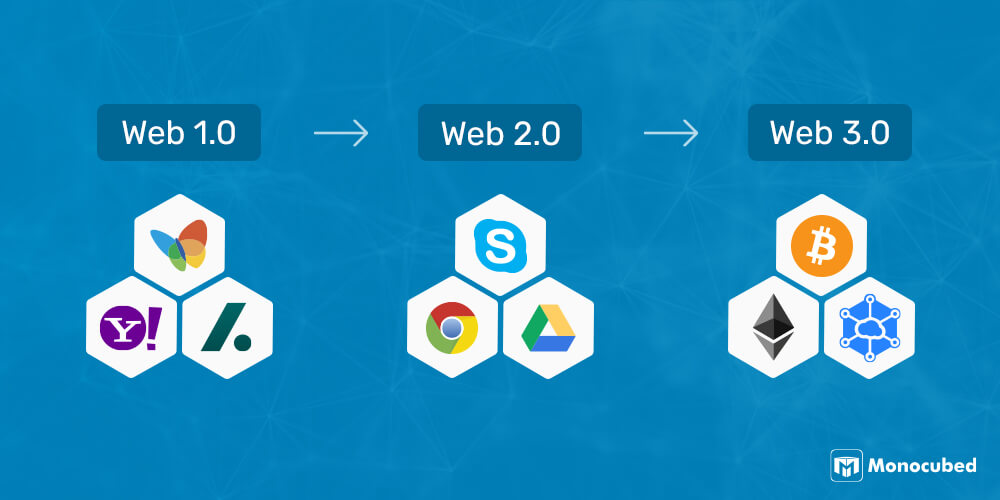
Web 3.0:

The third phase of the web, web 3.0, is still in its early stages of development. But it is generally defined as a semantically linked and intelligent web. This means that web 3.0 sites will be able to understand the meaning of the data that they are linking to, and will be able to provide more intelligent search results. Web 3.0 technologies are still in their infancy, but they hold a lot of promise for the future of the web.
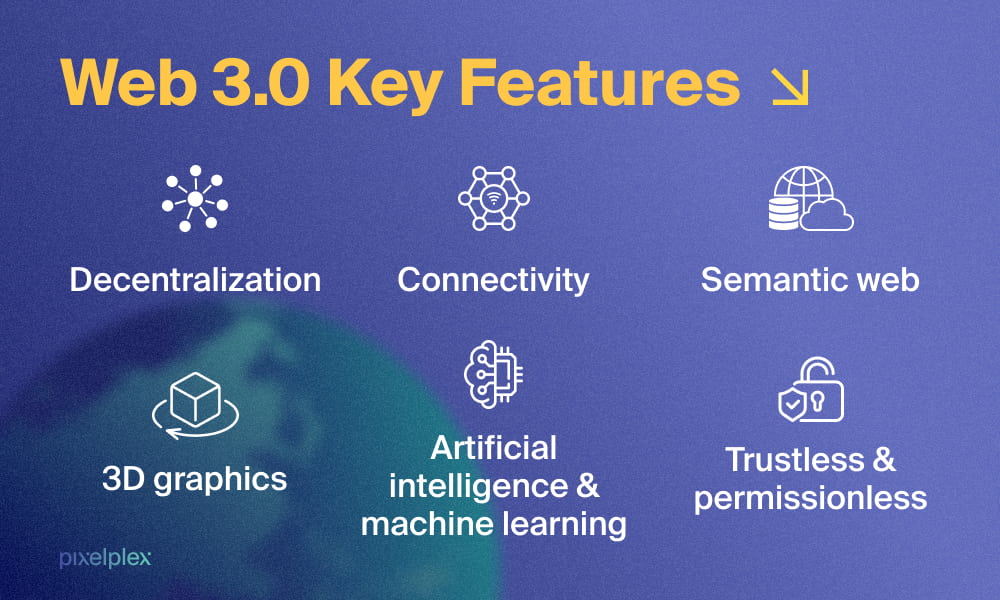
Just as you’re beginning to think you’re stuck in this sad reality, You hear another voice. Someone says “psst, over here”. The time traveler returns and this time it’s a woman, she’s dressed in a gold suit with a red cape. She has a strange-looking giant “B” symbol with 2 lines running through it.
“I’m from web 3.0”, she says. “The future of the internet.”She then proceeds to show you how web 3.0 will be a decentralized, open web where everyone has equal access to information.
“There will be no more search engine manipulation, no more data harvesting, and no more central control,” she says.
“Web 3.0 will be a web of equals, where we all have the same power and access to information.”
She then hands you a business card with a web address on it and disappears in a puff of smoke. You sit there for a moment, stunned by what you’ve just seen and heard.
You then realize that you have the power to change the future of the web. You realize that, you’re not crazy, you’ve actually been sent through time again. all they to web 3.0, the future of the internet.
This is a web where everything is decentralized, and people own their own data. You’re excited to explore this new world, but you’re not sure what to expect. You soon find out that web 3.0 is a very different place than what you’re used to.
For starters, there are no more cubicles. Everyone is working from home, and most people are using decentralized platforms like Bitcoin and Ethereum to make money. You also quickly realize that web 3.0 is a world of video gamers. Everyone is playing games like Fortnite and CryptoKitties, and many people are making a lot of money by trading virtual assets.
You start to wonder how you can get in on the action. But before you can even figure it out, you hear someone say “Welcome to the future!” It’s that dude in the silver suit and blue tie from web 2.0. “I see you’ve made it to web 3.0” he says with a smile.
“This is a world where anything is possible.” The woman in gold says. She then proceeds to show you how web 3.0 is changing the world. He shows you how people are using decentralized applications to do everything from buying and selling homes to ordering food delivery.
“And the best part is that all of this is done without the need for central authorities like banks or governments,” she says. “This is the future of the internet, and it’s only just beginning.”
You then realize that web 3.0 is a world where you can be your own boss, and make your own rules. You’re excited to get started in this new world, and you can’t wait to see what the future holds.
It’s up to you to build a web 3.0 site that will help create a decentralized, open web for everyone.
So, what does all this mean for you?
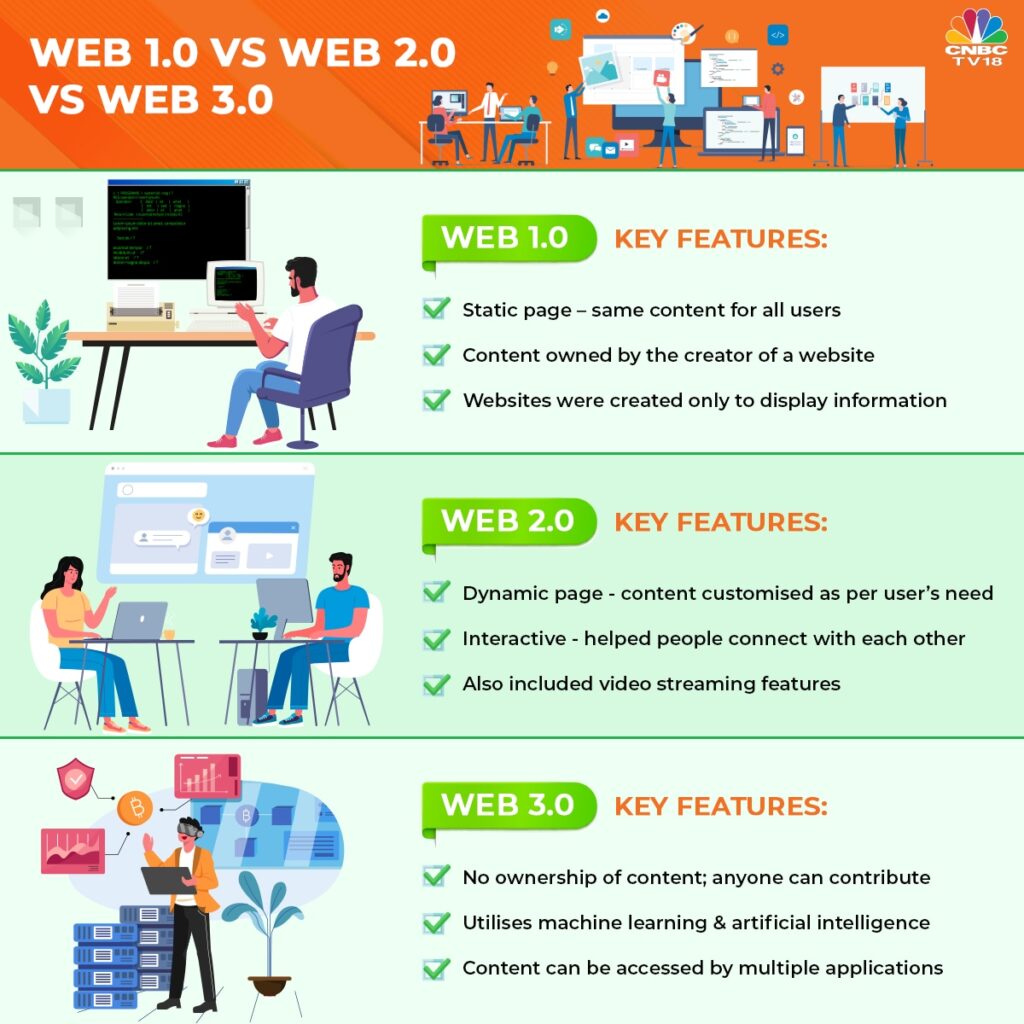
Involvement. If you’re not on any social media, if you don’t watch movies listen to music play games, or interact with any website in any way other than reading content, You’re arguably a web 1.0er.
If, if you’re looking to get more involved with the web or interact with any site in any way, then you’ll need to move into the web 2.0 phase. And if you’re really serious about decentralization of the web and/or making a difference on it, getting into blockchain, smart contracts, interacting with cryptocurrency, crypto projects, or even basic crypto-based gaming, then you can consider yourself to be a part of web 3.0.
The web is constantly evolving, and it’s up to you to evolve with it. So what are you waiting for? Get started today!
Where does Web 2.0 End and Web 3.0 begin?
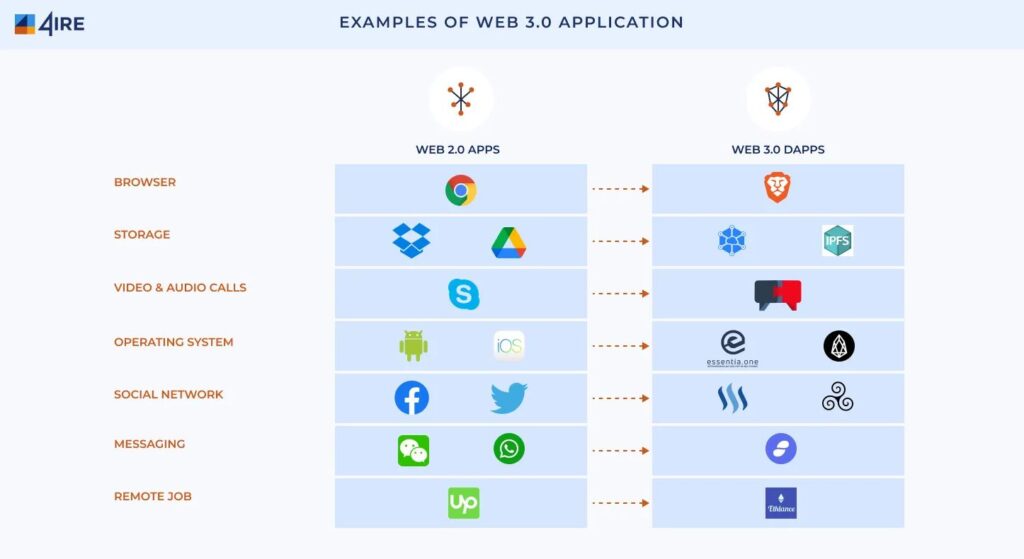
There is no precise answer to this question since Web 3.0 is still in its early stages of development. However, we can take a look at some of the technologies that are being developed for Web 3.0 and see how they differ from those used in Web 2.0.
One of the most important differences between Web 2.0 and Web 3.0 is the way in which data is stored and accessed. In Web 2.0, data is typically stored on centralized servers controlled by a single entity, such as a corporation or government. This can make it difficult for individuals to access their data or control how it is used.
In contrast, Web 3.0 technologies aim to decentralize data storage and give individuals more control over their data. One way this is being accomplished is through the use of blockchain technology.
Blockchain is a distributed database that allows anyone to store and access data in a secure and transparent way. This could have major implications for how we interact with the internet, as it would allow users to control their own data and ensure that it is used in a fair and transparent way.
Another key difference between Web 2.0 and Web 3.0 is the way in which users interact with the web. In Web 2.0, users typically consume content that is created by others, such as articles, videos, or music.
While this can be a great way to consume content, it doesn’t allow users to create their own content or interact with other users in a meaningful way.
Web 3.0 technologies aim to change this by giving users the ability to create their own content and interact with other users in a more meaningful way. One example of this is the development of decentralized applications (dApps).
DApps are applications that run on a decentralized network, such as a blockchain. This allows developers to create applications that are not controlled by any central authority and that can be used by anyone in the world.
Another example of Web 3.0 technology is the Interplanetary File System (IPFS). IPFS is a decentralized file storage system that allows users to store and share files in a secure and efficient way.
This could have major implications for how we share and access content on the internet, as it would allow users to store and share files without the need for a central server.
Final Thoughts
So, as you can see, there are some key differences between Web 1.0 Vs Web 2.0 vs Web 3.0 technologies. Web 1.0 shows us where we come from and, in many ways outlines the ideal intent of the web-just without the technology to realize those dreams.
Web 2.0 technologies are focused on centralized data storage and content consumption,
Web 3.0 technologies aim to decentralize this data storage and give users more control over their data and ultimately their lives.
Additionally, while Web 2.0 technologies allow users to consume content created by others, Web 3.0 technologies aim to give users the ability to create their own content and interact with other users in a more meaningful way.


Frequently Asked Questions.
The internet in the early days was a lot like the wild west. There were no rules and everyone was just trying to figure out what worked and what didn’t. It was a lot of trial and error.
We moved from the early days of the internet to where we are now by developing better technologies and standards. We also learned from our mistakes and became better at using the internet.
The main difference between web 1.0, web 2.0, and web 3.0 is the way in which data is stored and accessed. In web 1.0, data was typically stored on central servers and accessed by users through a web browser.
In web 2.0, data is still stored on central servers, but the way in which it is accessed has changed. In web 2.0, users typically consume content that is created by others, such as articles, videos, or music.
In web 3.0, the focus is on decentralizing data storage and giving users more control over their data. Additionally, while web 2.0 technologies allow users to consume content created by others, web 3.0 technologies aim to give users the ability to create their own content and interact with other users in a more meaningful way.
Some examples of web 3.0 technologies include the development of decentralized applications (dApps) and the Interplanetary File System (IPFS).
DApps are applications that run on a decentralized network, such as a blockchain. This allows developers to create applications that are not controlled by any central authority and that can be used by anyone in the world.
The Interplanetary File System (IPFS) is a decentralized file storage system that allows users to store and share files in a secure and efficient way. This could have major implications for how we share and access content on the internet, as it would allow users to store and share files without the need for a central server.
Some of the benefits of web 3.0 technologies include increased security, privacy, and decentralization.
With web 3.0 technologies, users have more control over their data and how it is used. Additionally, because these technologies are decentralized, they are not subject to the same problems as centralized systems, such as outages or censorship.
Finally, web 3.0 technologies have the potential to provide a more efficient and secure way of storing and sharing data.

